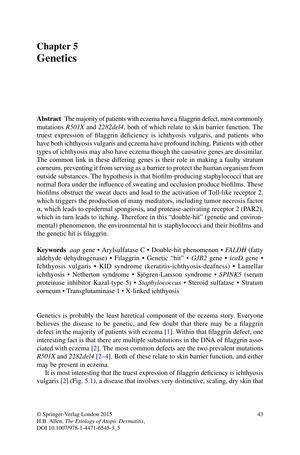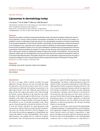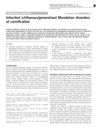Genetics
August 2014
in “
Springer eBooks
”

TLDR Certain gene mutations can weaken the skin barrier and, when combined with environmental factors, lead to eczema and severe itching.
The document examined the genetic factors contributing to eczema, particularly emphasizing the role of filaggrin mutations, such as R501X and 2282del4, in disrupting the skin barrier. It noted that while ichthyosis vulgaris, the most accurate expression of filaggrin deficiency, does not cause itching, its combination with eczema leads to severe itching. The presence of eczema in other types of ichthyosis with different genetic causes suggests a shared pathway involving a defective stratum corneum. The document proposed a "double-hit" hypothesis, where environmental factors like biofilm-producing staphylococci combine with genetic factors like filaggrin deficiency to cause inflammation and itching in eczema. This is supported by the identification of biofilm-producing genes in staphylococci from eczema lesions. Additionally, the document referenced rare genetic diseases with ichthyotic changes and associated eczema, underscoring the genetic basis of skin barrier disorders.



